A little further along the road from Fry's House of Mercy is the birthplace of another famous Bristolian, Samuel Plimsoll. He was born in Colston Parade in 1824. He is the man responsible for the safe loading line on ships - the Plimsoll Line. This was made law in the 1876 Merchant Shipping Act which finally made illegal the practice of unscrupulous owners from sending ships out overladen safe in the knowledge that even if it sank at sea they would be more than compensated by the insurance.
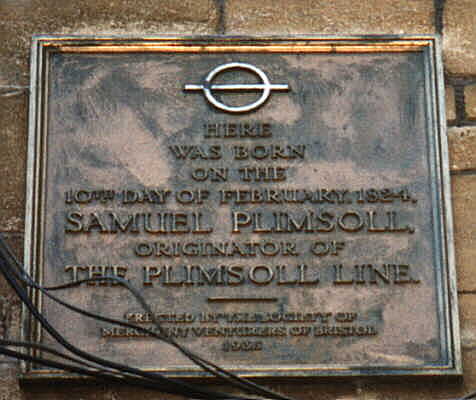
Plaque on the birthplace of Samuel Plimsoll
St Mary Redcliffe had a very lucky escape during the bombing that Bristol bore during 1941. A bomb landed in the vicinity of the junction of Guinea Street and Redcliffe Hill and a piece of the tramway was hurled over nearby houses to come to rest deeply embedded in the churchyard. This piece of track has been left in the churchyard as a reminder to those times.
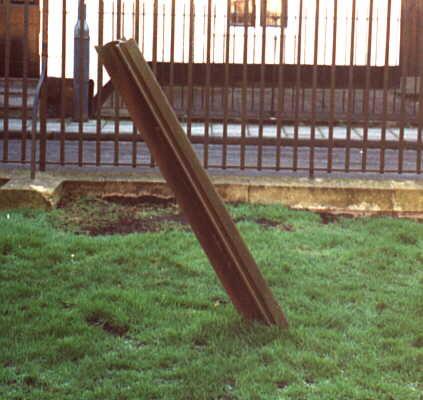
The tramtrack in St Mary Redcliffe churchyard
Further restoration was work was carried out in 1927, 1933 and 1962 which was done with as much skill and attention to detail as the original work.
To me, the church is a much more worthwhile visiting than the Cathedral, in fact, many visitors to Bristol mistake St Mary Redcliffe as our Cathedral.
Just around the corner from the tramtrack is Pump Lane, in this road was located the conduit from the Rugewell. Under the road here runs the old Harbourside Railway tunnel, this isn't so much a tunnel as a covered cutting. In places the old brickwork of this cutting break through to the surface and can be seen.
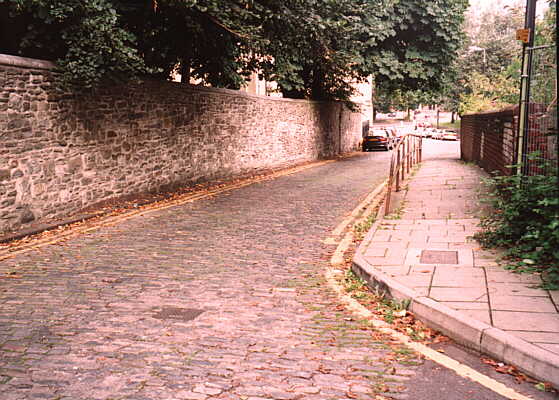
Pump Lane, Redcliffe
At the bottom of the stone wall on the left you can just make out a semicircle. This is the brickwork of the covered cutting of the old Harbour Railway. The pavement to the right is raised, this is also due to the cutting.
Near to St Mary Redcliffe, in Prewett Street, is the Kiln Restaurant. The building is the remains of one of the 120ft tall kilns used for firing glass. The kiln dates back to at least 1780 but in 1936 a crack developed and most of it was demolished, leaving the 25feet high, 50 feet diameter stubb.
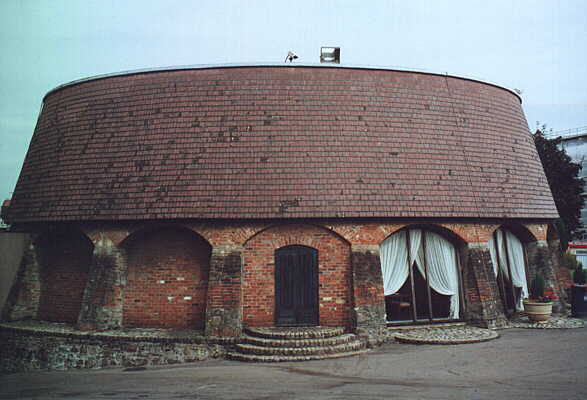
The Kiln Restaurant
A large portion of Redcliffe is hollow!!! The reason being in that sandstone was extensively mined from the area for use as sand in the manufacture of glass. These mine workings are generally known as Redcliffe Caves but none of them are natural caverns. The entrance to the "caves" is on Phoenix Wharf in the area between Redcliffe Parade and Redcliffe Way.

The entrance to Redcliffe Caves
The sites below contain a lot more information about the caves than I give here, the Axbridge Caving Group and Alan Gray in particular know more about these mines than I ever will.
Redcliffe Caves - Alan has been giving tours of the caves for 20 years.
Axbridge Caving Group - this site contains some nice articles and
photos on Redcliffe Caves
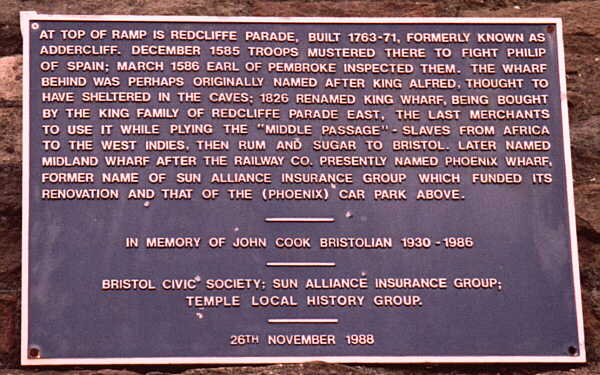
This plaque is attached to the wall beneath Redcliffe Parade
Contrary to popular belief Bristol never saw great numbers of slaves. Nearly all slaves were only ever carried on the "Middle Passage" - the journey between Africa and the plantations of the West Indies.
In August 2008, I received a very interesting email and photograph from John O'Brien who wrote...
My Mother was brought up in Barrossa Place or Terrace. I remember going there when I was very young. My Grandfather Harold Coles and and his brother Herbert who were Coal Merchants, had a stable where they kept the horse which pulled their cart, the stable was in a small road which ran parallel with Redcliffe Parade at the end farthest from Redcliffe Hill. By this time the family had moved to Bedminster and my Father had come out of the army and joined my Uncle Herbert in the coal business, the horse became redundant and they bought their first Motor Lorry an old "Thames" truck which they must have been proud of, as they had their picture taken in the entrance to Redcliffe Goods Yard. It was at the bottom of Pump Lane I think, with St Mary's Church in the background.
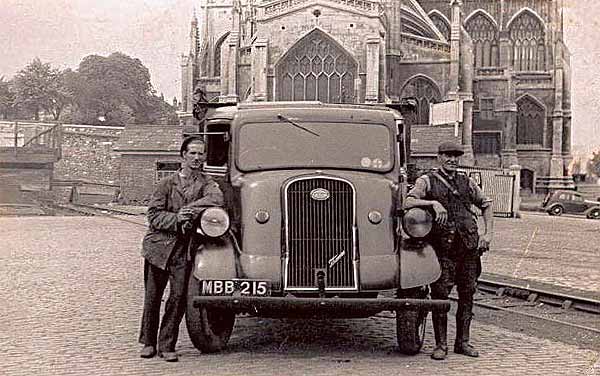
John's Father and Uncle
This page created 24th February 2000, last modified 24th January 2016